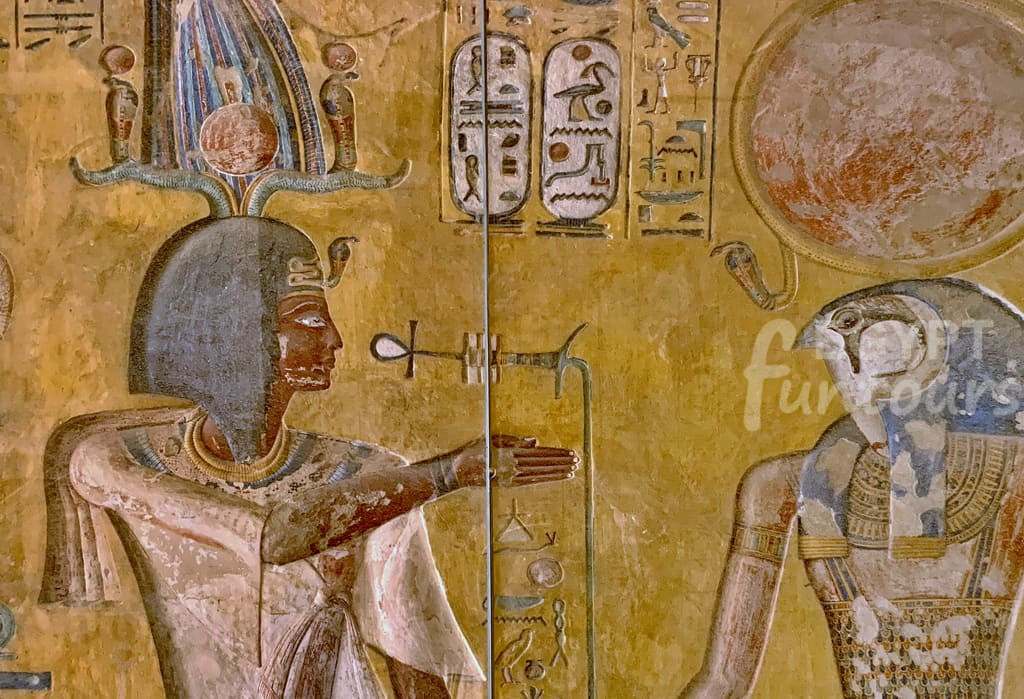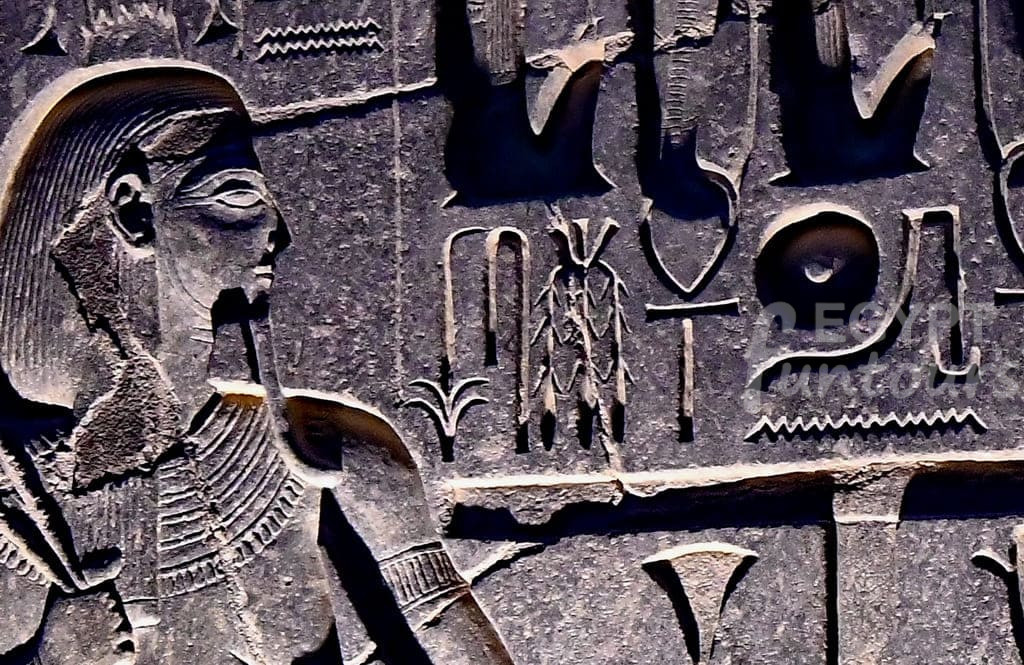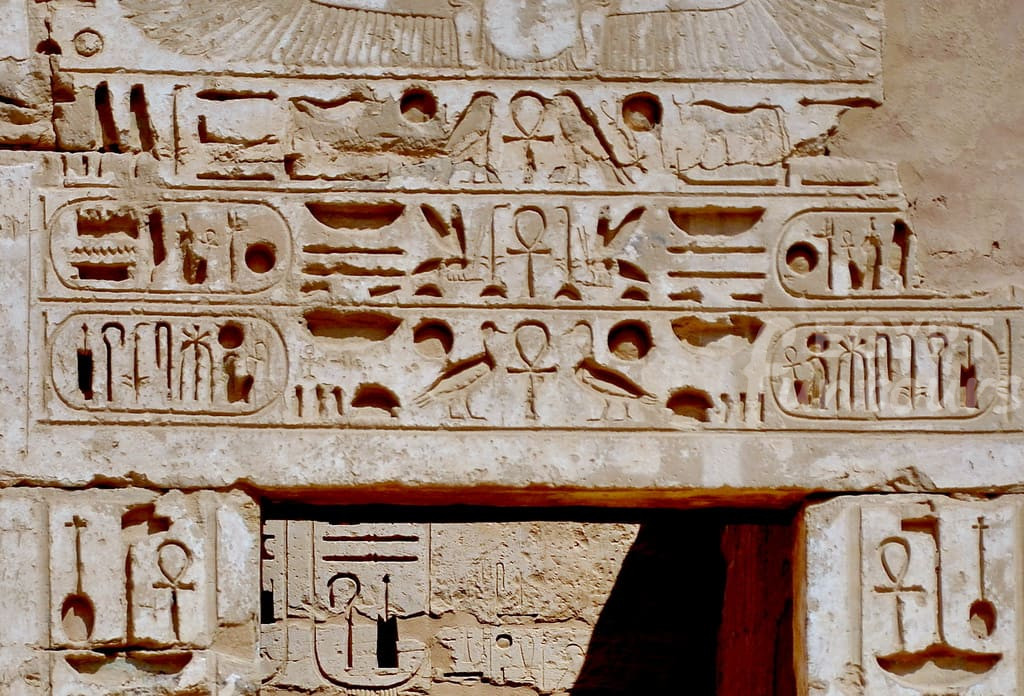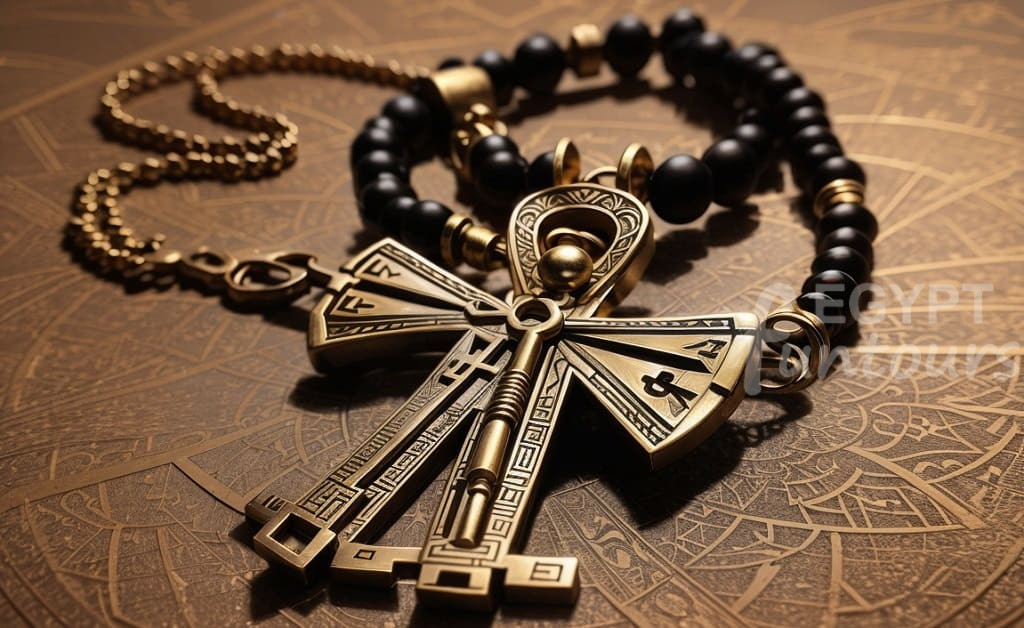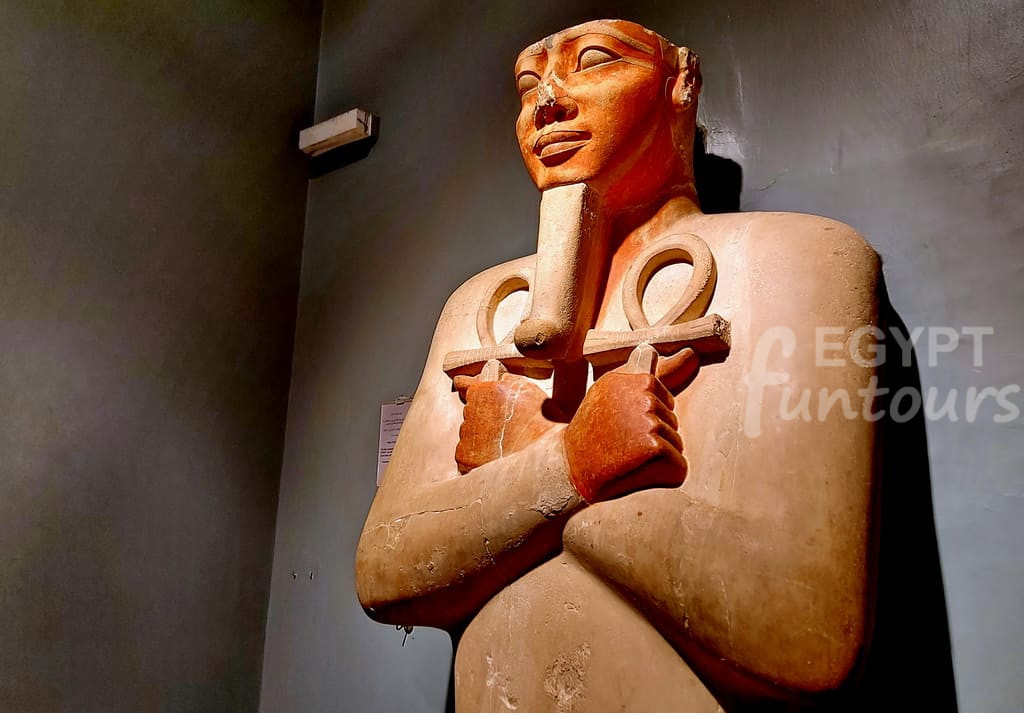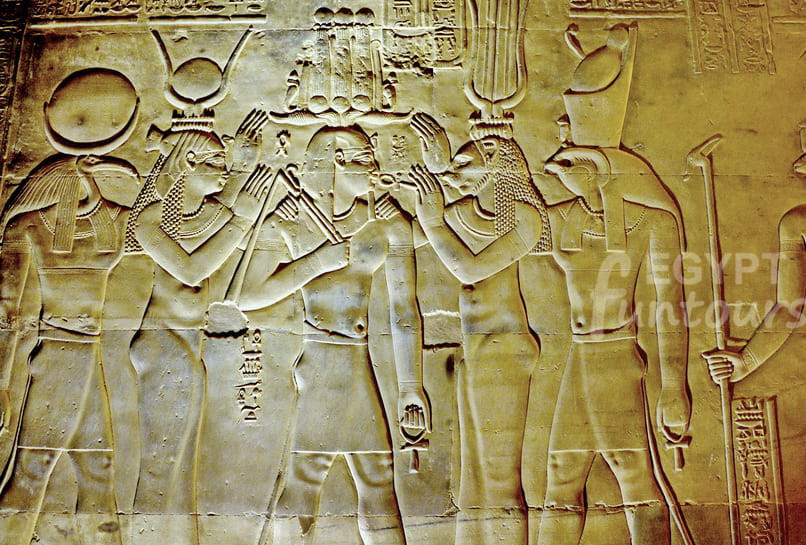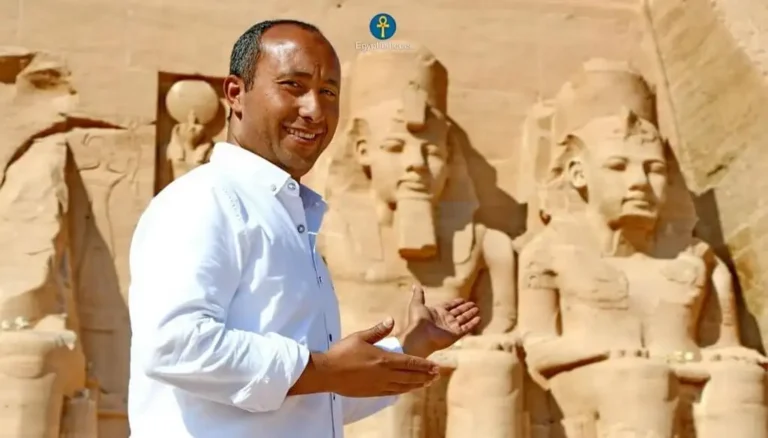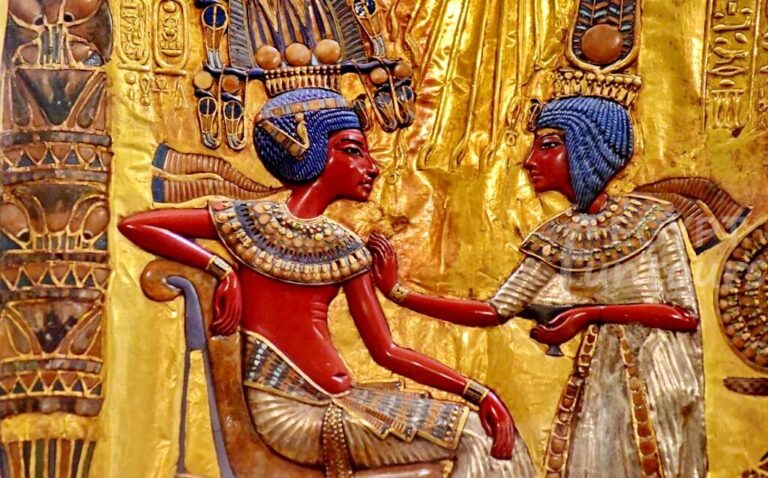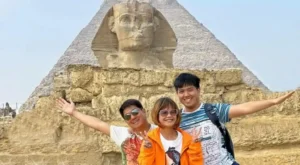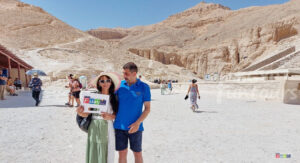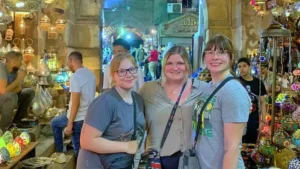Ankh as it relates to the sun
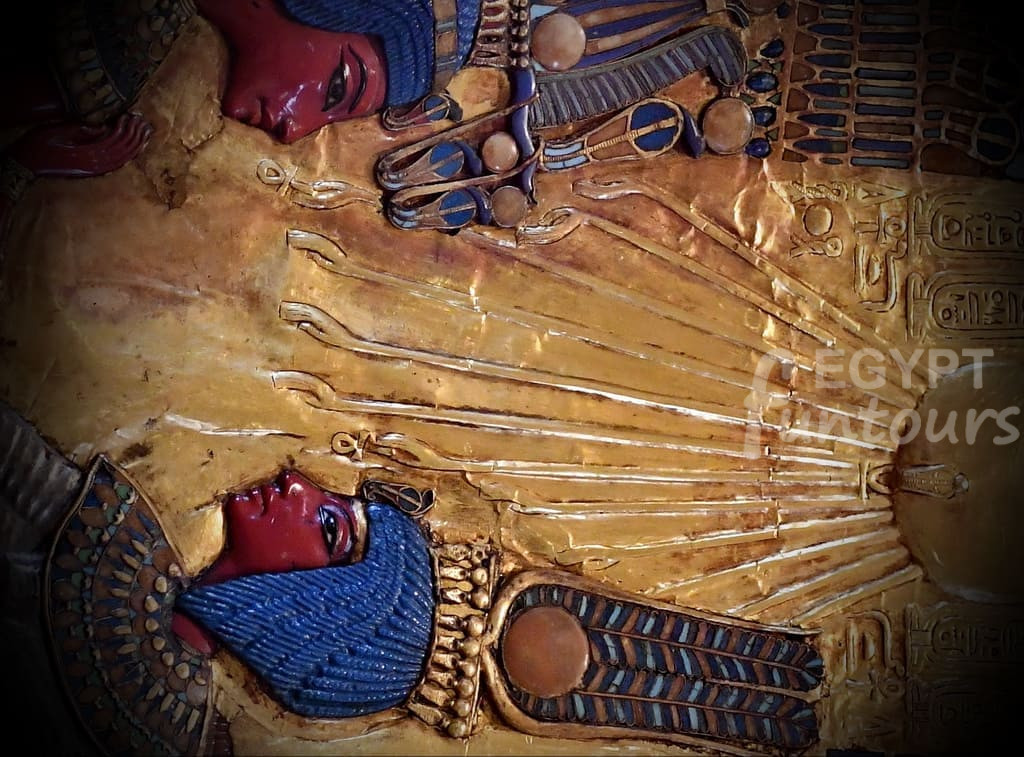
In ancient Egyptian belief, the Ankh symbol shared a profound relationship with the sun. The loop at the top of the Ankh represents the sun, while the horizontal bar symbolizes the Earth. This connection reflects the Egyptian understanding of life and the cyclical nature of existence. The sun was a powerful symbol of divine power, renewal, and the life-giving force that sustained all living things. The daily rising and setting of the sun were seen as a constant renewal of life and creation in the cosmos.
Ankh, Life, and the Afterlife
The Ankh, with its solar symbolism, represented the union of heaven and earth, the divine and the earthly realms. It symbolized the concepts of eternal life, the soul, and rebirth. It was often associated with gods and goddesses who held the power of life and creation. The Ankh was also seen as a key to the afterlife, providing access to the realm of the dead and the mysteries of eternity. In burial rites, the Ankh was frequently depicted as the key to the tomb, emphasizing its role in the soul’s journey after death. The Ankh’s link to the sun underscores the ancient Egyptian belief in the continuity of life and the interconnectedness of all things.
The key of life, “Ankh” and Djed Pillar
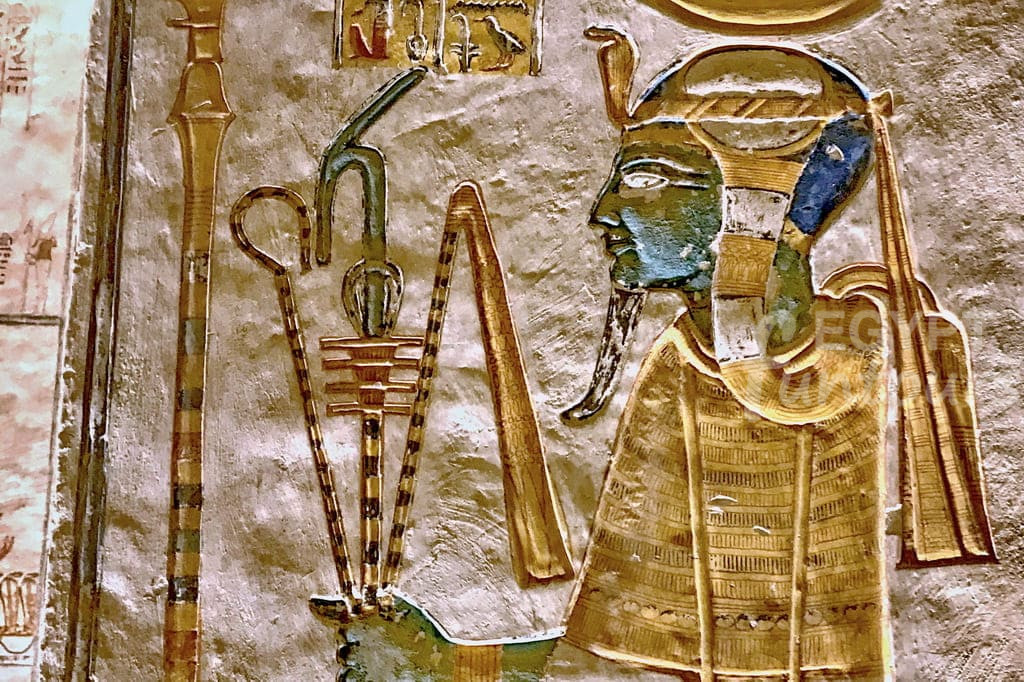
The key of life and the Djed Pillar are two important, yet distinct, symbols in ancient Egyptian culture that are often found together. The Ankh represents life, immortality, and the eternal soul. It is a cross with a loop at the top, often called the “key of the Nile,” and is closely associated with the goddess Isis and the union of Isis and Osiris. It was believed to be the key that could unlock the door to the afterlife.
A Complementary Relationship
In contrast, the Djed Pillar is a symbol of stability, endurance, and strength. It is depicted as a pillar with four horizontal bars and is closely linked to Osiris, the god of the afterlife, representing his backbone and regenerative power. The relationship between the Ankh and the Djed Pillar lies in their shared connection to the concepts of eternal life and resurrection. While the Ankh symbolizes the eternal soul and the promise of life after death, the Djed Pillar represents the stability and strength required for resurrection and rebirth. When shown together, often with the Was Scepter of power, these symbols represent the divine forces that work in harmony to ensure the continuity of life and the afterlife.
Ankh under the reign of King Akhenaten

King Akhenaten had a connection to the Ankh. This was due to his religious reforms. He focused on the Aten, the sun disk. During his reign, he changed religious beliefs. He replaced the traditional gods with Aten as the supreme deity. Art from this time shows the Aten’s rays. These rays often ended in hands. The hands offered the Ankh, the symbol of life. The Ankh is a symbol of eternal life and rebirth. It represents life and the eternal soul. Akhenaten’s connection to the Ankh symbolizes his focus on the Aten. It also shows the belief in the sun’s life-giving power.
Akhenaten’s reign is known as the Amarna Period. During this time, people still used the Ankh. He did this even though he outlawed the cult of Amun, the god traditionally linked with the Ankh. This suggests the Ankh had a wider meaning. It remained a powerful symbol of life. The Ankh symbolizes eternal life. Akhenaten used it during his reign, despite his rejection of other traditional gods. It represents the enduring belief in the power of life and resurrection.
The Use of Ankh “Key of Life” in Ancient Egypt
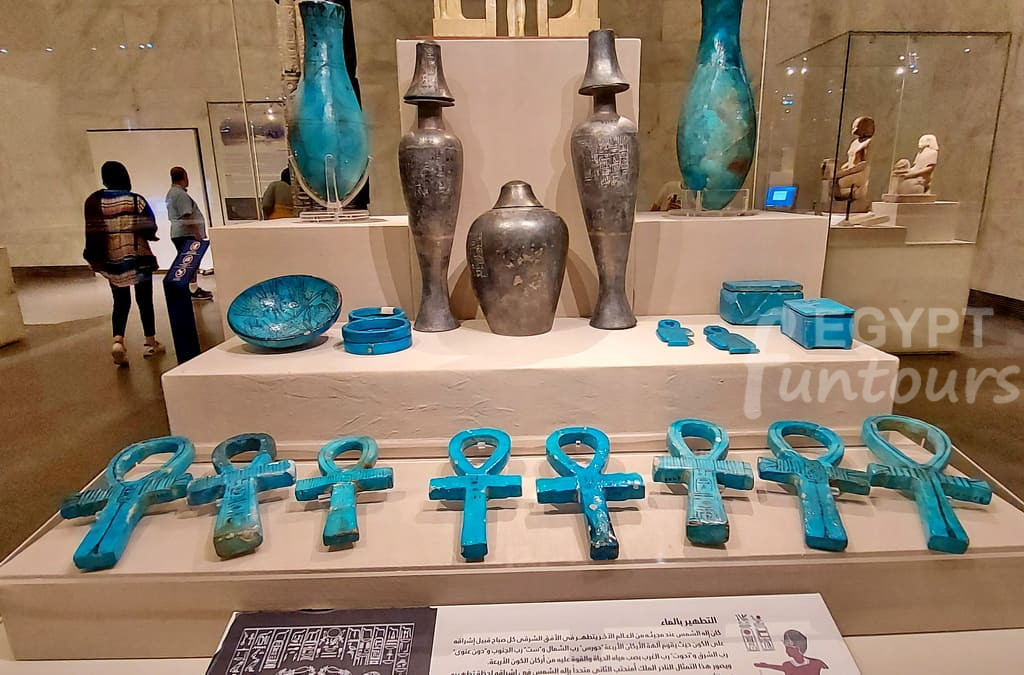
Throughout ancient Egyptian history, people prominently featured the Ankh in various aspects of life. They commonly used it in religious rituals and funerary ceremonies. People also wore it as an amulet or talisman, believing it offered protection and ensured a prosperous afterlife. Artists often placed the Ankh in the hands of deities, pharaohs, and ordinary people in tomb paintings and reliefs. This emphasized its connection to the divine and its role in the journey to the afterlife.
The Ankh’s influence extended beyond Egypt. It reached neighboring civilizations. In Nubia, the Kushite kingdom adopted the Ankh and used it in their religious practices. We can also find the symbol in ancient Mesopotamia, where it was associated with the goddess Ishtar and the concepts of fertility and life.
In more recent history, the Ankh has experienced a resurgence in popularity, particularly in modern spiritual and New Age movements. It has become a symbol of personal transformation, spiritual awakening, and the pursuit of a balanced and harmonious life. The Ankh’s timeless symbolism continues to captivate and inspire individuals seeking deeper meaning and connection.
The use of the Ankh throughout history showcases its enduring significance as a symbol of life and immortality. Its presence in ancient Egyptian culture and its subsequent influence on other civilizations demonstrate its universal appeal and the timeless quest for understanding the mysteries of life and death. The Ankh serves as a reminder that life is a precious gift, and its symbolism continues to resonate with people seeking to embrace the eternal nature of existence.
